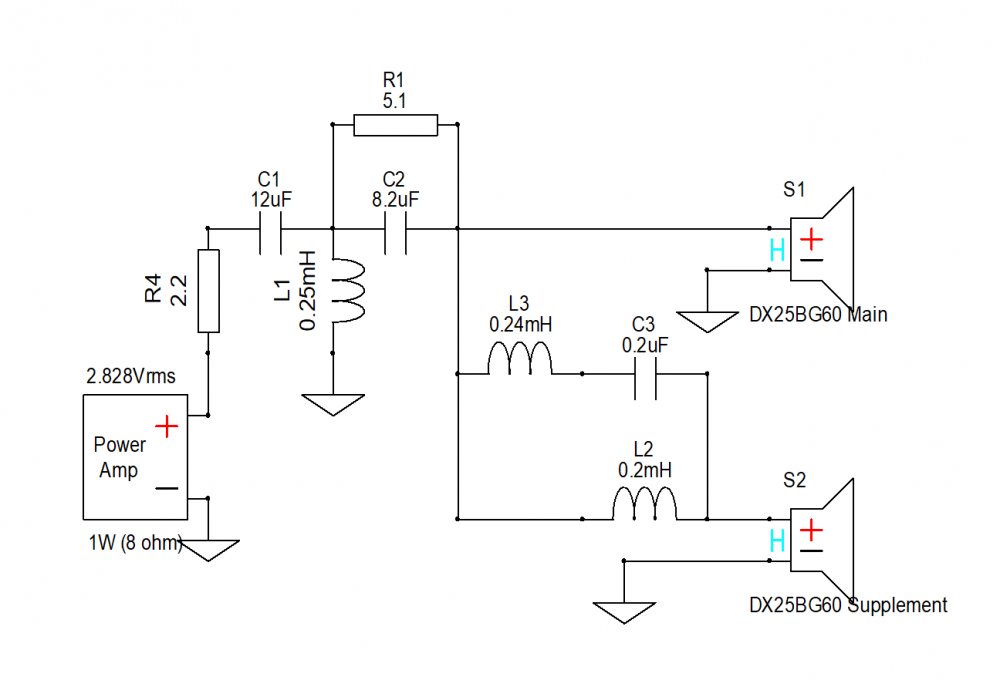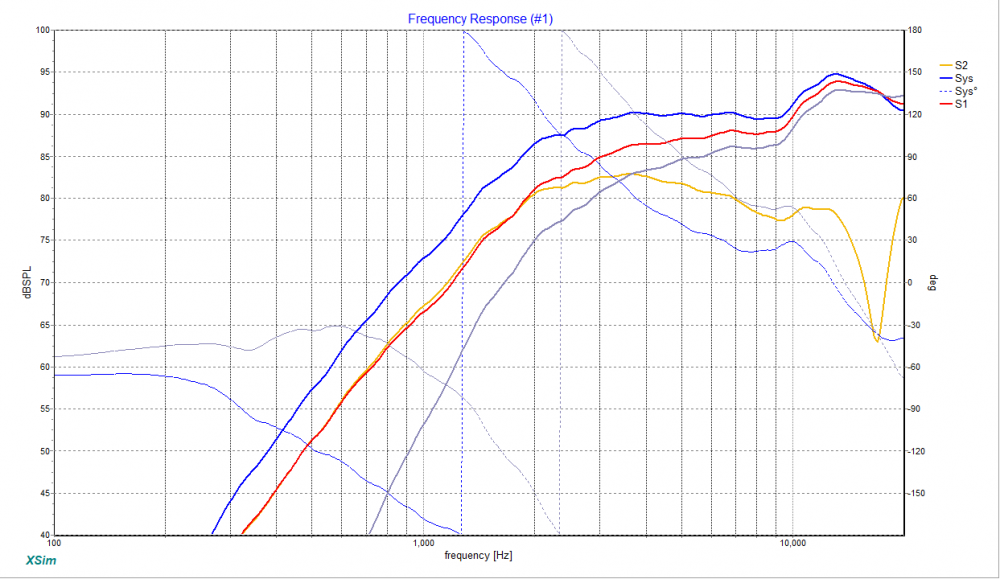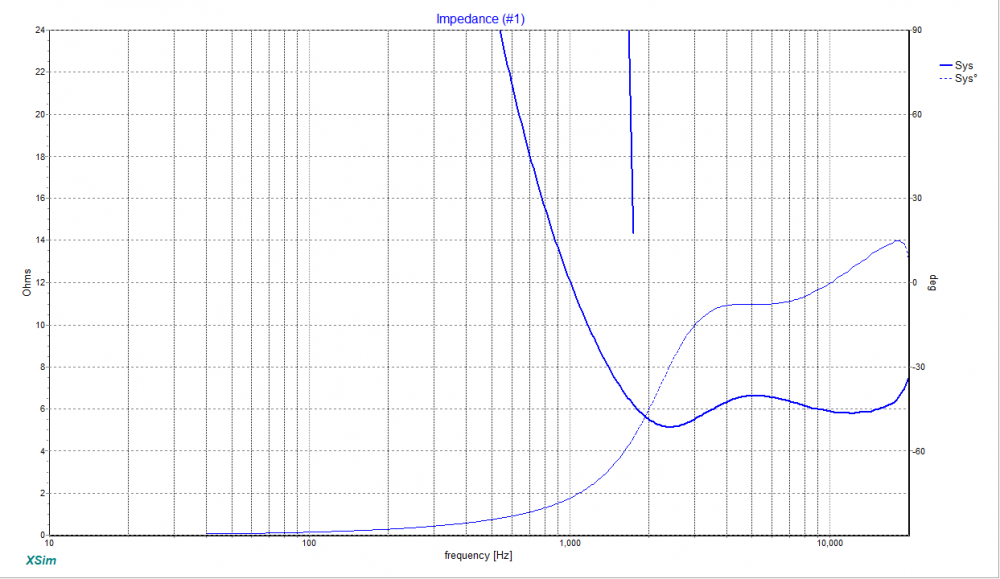Site Links
Howdy, Stranger!
It looks like you're new here. If you want to get involved, click one of these buttons!
Quick Links
Categories
In this Discussion
Who's Online (0)
Polk SDA Dual Tweeter Crossover
So I've been wondering for years how the multiple arrays of tweeters were filtered in the SDA designs. Today if you google out Polk SDA Handbook, you can find what appears to be an internal reference document for the designs. Looking it over it contains this schematic. (I make no claim to ownership here, this is all (C) Polk Audio)

Looking that over, and feeling DIY driven, I plugged into XSim to model with a couple Tymphany DX25BG60-04 tweeters and began tweaking to get a "proper" result. I'll talk more about that in a bit. But here is what I settled on and what I will listen and measure in my test build down the road:
Circuit:

SPL:

Impedance:

What do I mean by proper? Well I can't be 100% sure, but looking at the response of the SDA circuit and the filter itself, it seems to me that there is one Main tweeter that carries the entire output treble, and one Supplemental tweeter that is low-passed and is meant to help carry the burden of the output from the crossover frequency to say 3k-ish. This makes sense to me, because you'd want to minimize the comb effects at higher frequencies and still maintain the increased power-handling of two drivers at lower frequencies.
I'm looking forward to listening to what this sounds like in my design. I figured others might be intrigued by this too.




Comments
When you look over the SPL graph, the red line is the response of the Main tweeter, and the orange the Supplemental. Blue total output on axis in phase, and light blue with the supplemental tweeter inverted. I did that to see if there was reduced impact of out-of-phase issues at higher frequencies. (Seems so to me!)
Interesting concept!
I wondered about this too: the Sonab omni-directional speakers from the 70s/80s used two tweeters firing in different directions. I assumed Sonab would just have connected the tweeters in series or parallel, without separate crossover circuits for each one.
Geoff
Are you going horizontal or vertical with the two tweeters, I believe polk did both. I really need to google this.
Vertical. The horizontal tweeter SDA speakers were the first models, before it was known that only the band of 200-2000 hz is needed to get most of the SDA effect.
Interesting concept, however I struggle to understand why one would do this over simply using a horn/waveguide with a single tweeter. Maybe they got a good price break on a bulk tweeter purchase.
I'm certain marketing "tweeter arrays" was a selling point in the era of these speakers. Actually I was also a sucker for their look, I think they are great looking speakers.
Yes, I am sure marketing plays a big role, Tekton has certainly got a lot of coverage for their tweeter array that they wouldn't have if they has just used a boring old waveguide.
Polk was one of those "cool" top tier speakers. I was a fan too. Bummer I never got to hear any of the big ones.